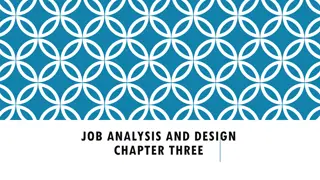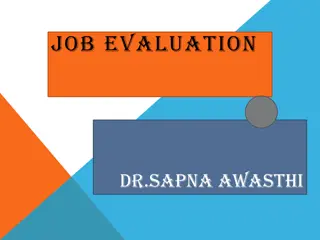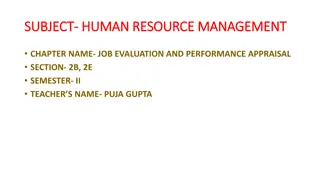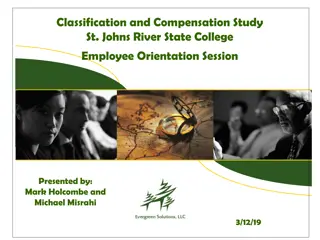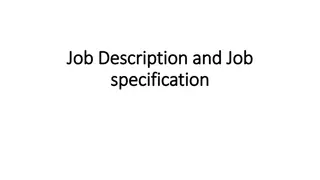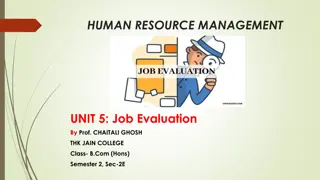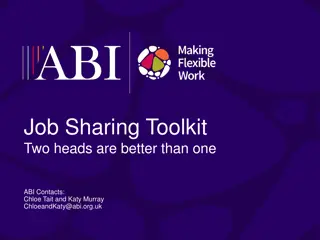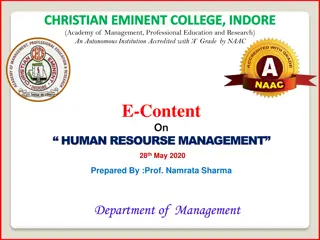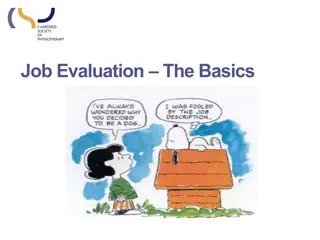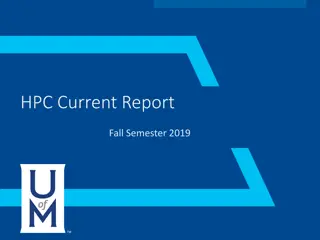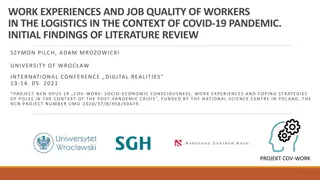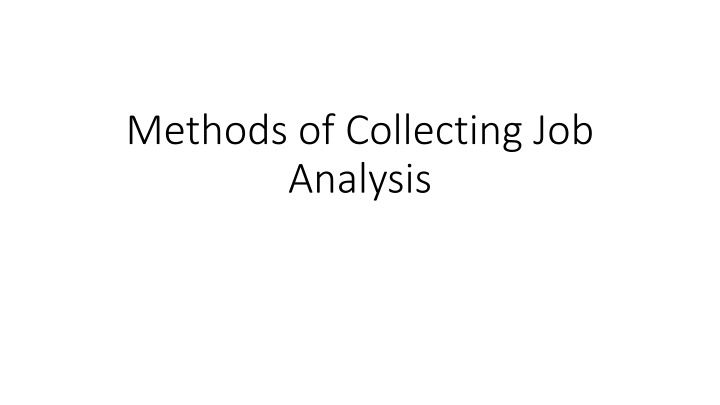
Effective Methods for Job Analysis Information Collection
Learn about various methods for collecting job analysis information such as interviews, questionnaires, observation, participant diary/logs, and quantitative job analysis techniques. Discover the importance of interviews, typical questions asked, guidelines for conducting interviews, and using questionnaires for job-related duties description.
Download Presentation

Please find below an Image/Link to download the presentation.
The content on the website is provided AS IS for your information and personal use only. It may not be sold, licensed, or shared on other websites without obtaining consent from the author. If you encounter any issues during the download, it is possible that the publisher has removed the file from their server.
You are allowed to download the files provided on this website for personal or commercial use, subject to the condition that they are used lawfully. All files are the property of their respective owners.
The content on the website is provided AS IS for your information and personal use only. It may not be sold, licensed, or shared on other websites without obtaining consent from the author.
E N D
Presentation Transcript
Methods of Collecting Job Analysis
METHODS OF COLLECTING JOB ANALYSIS INFORMATION Introduction : Use at least the following aspects in collecting Job analysis information ,including Interviews Questionnaires Observation. Participant Diary/Logs. Quantitative Job Analysis Techniques .
INTERVIEWS : Managers use 3 types of interviews to collect Job Analysis data 1.Individual interviews with each employee, 2.Group interviews with groups of employees who have the same job, 3.Supervison interviews with one or more supervisors who know the job.
Some Typical Interview questions include : 1. What is the Job being performed ? 2. What are the major duties of your position? What exactly do you do? 3. What physical location do you work in ? 4. What are the education, experience, skill and (where applicable ) certification and licensing requirements? 5. What are the jobs responsibilities and duties ? 6. What are the health and safety conditions ? 7. What are your responsibilities ? What are the environmental and working conditions involved ?
Interview guidelines : Keep several things in mind when conducting a job analysis interview. First, the job analyst and supervisor should work together to identify the workers who know the job best and preferably those who will most objective in describing the duties and responsibilities. Second, quickly establish rapport with the interviewee. Know the persons name, speak in easily understood language, briefly review the interviews purpose, and explain how the person was chosen for the interview.
Third, follow a structured guide or checklist, one that lists questions and provides space for answers. This ensure you will identify crucial questions ahead of time and that all interviewrs (if there is more than one ) cover all the required questions. Fourth, when duties are not performed in a regular manner for instance, when the worker doesn t perform the same job over and over again many times a day ask the worker to list his or her duties in order of importance and frequency of occurrence. Finally, after completing the interview, review and verify the data. Specifically, review the information with the workers immediate supervisor and with the interviewee.
QUESTIONNAIRES : Having employees fill out questionnaire to describe their job related duties and responsibilities is another good way to obtain job analysis information. You have to decide how structured the questionnaire should be and what questions to include. Some questionnaires are very structured checklists. At the other extreme, the questionnaire cab be open ended and simply ask the employee to describe the major duties of your job.
OBSERVATION : Direct observation is especially useful when job consists mainly of observable physical activities assembly line worker and accounting clerk are examples. On the other hand, observation is usually not appropriate when the job entails a lot of mental activity ( lawyer, design engineer. Managers often use direct observation and interviewing together. One approach is to observe the worker on the job during a complete work cycle.
PARTICIPANT DIARY/LOGS : Daily listings made by workers of every activity in which they engage along with the time each activity takes. Another approach is to ask workers to keep a diary/log of what they do during the day. For every activity he or she engages in, the employees records the activity ( along with the time ) in a log. This can produce a very complete picture of the job, especially when supplemented with subsequent interviews with the worker and the supervisor.
Some firms take a high tech approach to diary/logs. They give employees pocket dictating machines and pagers. Then at random times during the day, they page the workers, who dictates what they are doing at that time. This approach can avoid one pit fall of the traditional diary / log method : relying on workers to remember what they did hours earlier when they complete their logs at the end of the day.
QUANTITATIVE JOB ANALYSIS TECHNIQUES : Qualitative approaches like interviews and questionnaires are not always suitable. For example, if your aim is to compare jobs for any purposes, you may want to be able to assign quantitative values to each job. The position analysis questionnaire, the Department of Labor approach, and functional job analysis are three popular quantitative methods.




